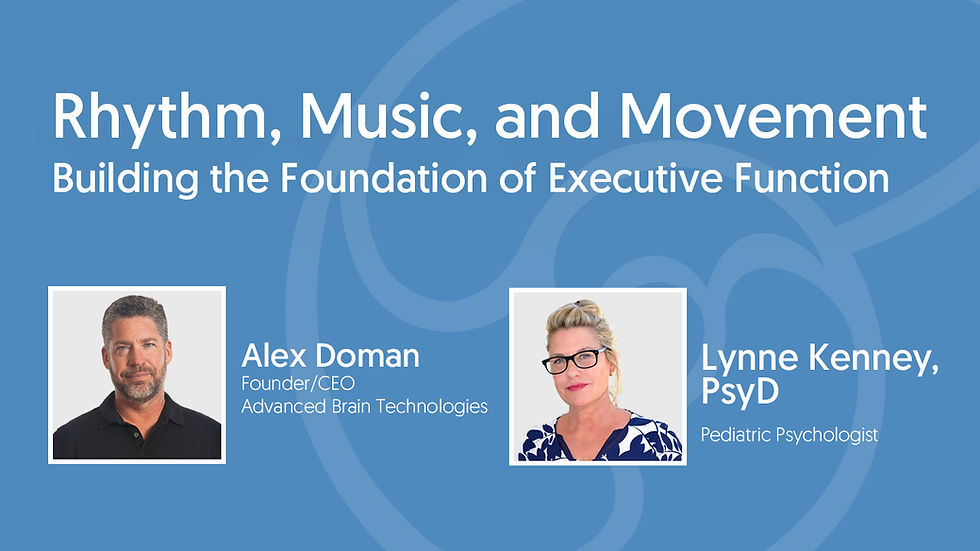25+ Science of Reading, Language, Literacy & Learning Resources
- drlynnekenney

- Oct 2, 2021
- 5 min read
Updated: Jan 29

In 2021, I wrote this post for some families in our practice who asked for more Science of Reading Resources. In the three years that have passed, the conversation in my office with families has broadened. Now we talk not only about the importance of oral language, phonemic awareness, and phonology as the building blocks upon which other reading skills develop, but we also talk about co-existing conditions, strengths in dyslexia, the Science of Learning, auditory neuroscience, and more. So, I am switching this post up a bit to include more of the resources and tools we currently share with families in our practice.
What Is the Science of Reading?
The Science of Reading is a body of empirical research that has developed over the past 50 years integrating studies in neuroscience, linguistics, cognitive science, education, and psychology to help us better understand how our brains learn to read.
"The “Science of Reading” is a phrase representing the accumulated knowledge about reading, reading development, and best practices for reading instruction obtained by the use of the scientific method," Petscher et al. 2020
What is the Science of Learning?
The science of learning is an interdisciplinary field that examines how people learn. It integrates research from psychology, neuroscience, education, and cognitive science to understand the processes involved in learning, memory, and cognition. The goal is to develop effective teaching methods and educational tools based on evidence about how the brain processes information, acquires knowledge and retains skills.
What is the Current State of Reading Achievement in the United States?
It is helpful to understand the history of reading instruction in the United States in order to understand why it is critical to implement curriculum instruction based on Structured Literacy for all of our students.
Since 1969, the National Center on Education Statistics has been publishing the National Assessment of Educational Progress (NAEP). Learn more about the history of the Nation's Report Card HERE.
In 2019, the percentage of fourth-grade public school students performing at or above the NAEP Proficient level in reading was 34 percent nationally. Across the states/jurisdictions, the percentage of public school fourth-graders performing at or above NAEP Proficient in reading ranged from 24 percent to 49 percent. Read the 2024 Nations Report Card here.
There are many factors related to the lack of appreciable improvement in reading outcomes, including yet not limited to:
Instruction and curriculum not aligned with science
Failure to properly screen PreK-2nd graders for dyslexia, dyscalculia, developmental language disorder, and developmental coordination disorder
Increasing ELL learners who require, yet may not receive, systematic & explicit instruction
Diminished implementation of phonological & morphological interventions in PreK-2nd grade
Diminished access to developmental preschool and kindergarten
An over-emphasis on teaching to the test
The growing divide between students of wealth and students in poverty
Declines in physical activities that support sensory, fine, and gross motor development
Diminished access to high-quality sleep & nutrition
Students of color continue to lag behind Caucasians and Asians due to historical inequity, poverty, underfunded schools, and diminished opportunities for language, arts, and math.

A Few Concepts to Consider
Reading, writing, and math do not come naturally, evolutionarily. Humans are agricultural beings. We were designed to roam, forage, and feed our young. We were designed to communicate but we were not designed to read, write, and compute. For many students reading, writing and math require explicit, systematic, and developmentally progressive instruction. Many current researchers support a structured literacy approach to teaching the elements of reading. Structured literacy (SL) approaches emphasize highly explicit and systematic teaching of the components of literacy, including but not limited to oral language, phonemic awareness, phonology, sound-symbol relationships, syllable instruction, fluency, morphology, syntax, semantics, vocabulary, comprehension, and written expression.
The reading code in English is a complex melding of middle English, Anglo-Saxon, and Latin influences with inconsistent oral, grammatical, and, syntactic structure. This leads to a language with inconsistent rules which for many, must be explicitly taught, Learn more here.
For the 10-12% of students with weaknesses in phonological awareness, learning to read will not occur simply by providing text-rich environments. These students require explicit systematic phonological instruction to develop the pathways in the brain that map sounds to letters and print.
Research shows that it is more effective to intervene early, prior to first grade, to ameliorate phonological deficits. The longer we wait, the harder it is for the student. Deliberate, frequent, distributed practice in oral awareness, phonemic awareness, sound manipulation, phonology, letter identification, phoneme-grapheme mapping, and syllabication are needed in PreK - First Grade.
The great news is that explicit, systematic phonological awareness instruction leads to more easily understood phonics and morpheme manipulation for all readers not just those with dyslexia. In dyslexia, the key is to move to letter-sound awareness and orthographic mapping as soon as oral awareness and phonological awareness skills are mastered.
Note: "Most research has suggested that dyslexia can affect 3–10% of the population, depending on the exclusionary criteria and the specific cut-offs that are used for its diagnosis (Peterson & Pennington, 2015). Many studies have found that dyslexia is under substantial genetic influence, with heritability estimates typically varying between 50 and 60% (Grigorenko, 2004; Olson & Byrne, 2005; Pennington & Olson, 2005)", Brimo et al., 2021.
It's important to note that many strengths have been associated with the dyslexic brain. Dyslexia carries skills in reasoning, entrepreneurship, leadership, material, dynamic reasoning, art, and music. See Dyslexic Advantage and Made by Dyslexia for more information. Also read - Developmental Dyslexia: Disorder or Specialization in Exploration? by Taylor & Vestergaard, 2022.
Below you will find clickable links to dive into Structured Literacy, Dyslexia, Learning, and more.

















Do you recommend any student workbook for phonics review